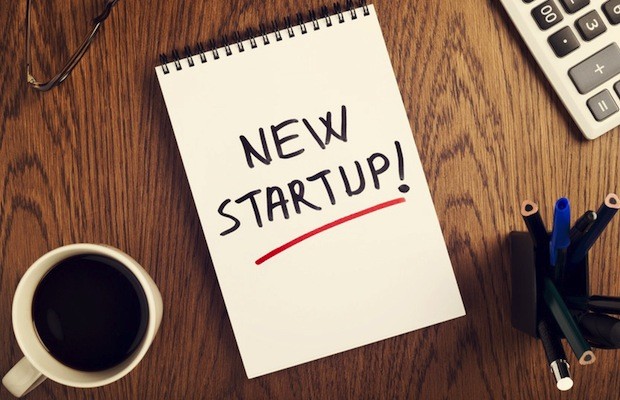Nothing tells you you’re on the right track with your business idea like having someone pay you for your product or service.
Whether you’re running a restaurant, building an ecommerce site or mobile app, or even starting your own consulting company, your first few customers will quite literally be the life or death of your business. So why wait until after you’ve spent hours upon hours and stacks of cold, hard cash building your business to find your first loyal users? Let’s look at some of the reasons why you’ll want to find an audience before you build anything, and just how to go about doing that.
This is part 2 in our 4 part series on How to Validate a Business Idea. Start with Does your business solve a problem people actually have?
Why your audience is the secret to building your business
Pat Flynn, entrepreneur, blogger, and podcaster best known for his website Smart Passive Income, has made a living off of providing niche audiences with valuable content and tools. But he didn’t set out to do this. His audience told him to. Back in 2008, Pat was laid off from his job as an architect. So he decided to take the time to beef up his skill set and started studying for the LEED exam—a green building certification. Along the way, he started a website to help share the knowledge he was learning: “As I was doing all that LEED stuff, I didn’t think of myself as an entrepreneur,” Pat told Forbes back in 2014. “That opportunity was always there, but I didn’t realize it until after four or five people said, ‘Pat, your stuff is so good, I would pay you for it.’ That’s when I finally took action.” That ‘action’ was an ebook sharing his lessons. When he launched the book to his audience, it brought in more than $7,000 in the first month alone.Where to find your initial audience
Pat validated his business idea by blogging, but what about before you’ve even started? Or what if you don’t feel that writing is one of your strengths? There are still ways to connect with an audience of like-minded people and find out if there’s a real need for your product. Pat describes this as finding the 3 Ps: People: Who are the influencers already in your space? The top Twitter accounts, the top Facebook accounts, who are the admins of the top Facebook groups? Who are the owners of the top blogs and podcasts? Places: What are the websites, forums, in-person meetings and conferences your target audience goes to? Products: What products or services are already out there for your potential audience? They don’t necessarily have to be selling, but just that they’re there is important. Watch Pat explain the 4p process in-depth: Taking 30 minutes to map out these 3 ps on a spreadsheet gives you a clear idea of who your audience is. But more than that, it gives you the coveted final 4p: Position. With a clear view of your market and your audience, you’ll now be able to see where any holes are. What can you do better? If you’re making a physical product, go to Amazon and check out the 3-star reviews for your competition. Not only are these the most honest, but they’ll usually lay out exactly what the pros and cons are. To make a better product, just listen to the pros and make sure you’re not including the cons.
We’re only scratching the surface on how to find paying customers here. For a deeper dive plus the full interview with Pat Flynn, check out Ryan Robinson and CloudDevs’s 30 Days to Validate course.
A step-by-step guide for turning your audience into your first paying customers
Now that you have a good idea of who you’re after, it’s time to turn those people into potential customers. This starts by getting to know them and building a personal relationship. Because as Flynn, explains, when you’re starting out, this is your competitive advantage: “I knew how important it would be to have these deep relationships with my audience. Because when you start out that’s the advantage you have. You’re able to interact with your audience in a way that a bigger brand can’t. To the point where you can start to ask questions: What are you struggling with? What do you need help with? These turn into blog posts, tutorials, software, and courses.” Pat flynn explains how to build deep relationships with your audience: So the natural next step is to identify these people who can help you and start building and nurturing meaningful relationships with them. Here’s a step-by-step process for doing just that:Step 1: Craft a quick elevator pitch
Entrepreneur and founder of the 30 Days to Validate course, Ryan Robinson, suggests starting this process by writing a quick elevator pitch about what your business is. Start by thinking about the position you uncovered during the 3p exercise.- What is missing from the industry?
- Where do people need the most help?
- Where can you provide more value than what’s currently available?
Step 2: Create an early feedback group
To make things easier, the first few people you reach out to should already know you and have a reason to listen to what you’re saying. While this doesn’t necessarily mean you want your parents in your early feedback group (unless they’re also in your target market), but friends or family that would legitimately use what you’re making are perfect. Here’s a look at some of Ryan’s first messages he sent out: Start by working your way down this list:- Friends & family
- Co-workers
- Former co-workers
- Other professionals you’ve worked with
- Classmates or former classmates from school
- Teachers or professors you’ve had
- Fellow members in clubs, societies, groups or meetup networks you’re in
Step 3: Expand beyond friends and family
Now that the ball is rolling, it’s time to look beyond the comfort zone of your own network and put yourself out there. If you don’t have a large personal network, or you’re moving into a space you don’t know a lot of people in, this is an especially important step. So where do you find these people? Enter online communities. Facebook, LinkedIn, Reddit, Quora—all of these communities have groups dedicated to your business idea and niche. The key is to start having meaningful conversations about what you’re doing without being annoying and spammy. For example, don’t ask people to visit a website or fill out a form or complete any action. Just start to make your name into a regular contributor for the group. Here’s a script Ryan put together inspired by one of his mentors, Ramit Sethi, for getting conversations started: Once a few people start responding to your post, nurture those conversations, keep them going, stir up a debate, share your thoughts on the subject matter. When the conversation dies down, reach out to the people who were most active in the discussion. They’ll have a reason to want to hear from you. Replicate this process until you’ve built up an early feedback group of ideally, at least 25–50 people so that you’ll begin getting some diversity of opinion within your community. While there are thousands of communities you could join, here’s a few places to get you started: Standalone Online Communities:- AMEX Open Forum for Small Business Owners (broad)
- Angel.co (focus on startup community)
- Inbound.org (focus on marketing)
- GrowthHackers (focus on growth & marketing)
- HackerNews (focus on startups and more technical projects/news)
- Quora (broad)
- ProductHunt (focus on startups and tech)
- Bonus: Amazon Reviews (if you’re building a physical product)
- Freedom Hackers Mastermind (39,000+ members)
- The Smart Passive Income Community (28,000+ members)
- The Joyful Entrepreneur (37,000+ members)
- Heart-centered, soul driven entrepreneurs (16,000+ members)
- Coaches, Authors, Entrepreneurs (13,000+ members)
- Women’s Entrepreneur Network (32,000+ members, women only)
- Super Hero Entrepreneurs (10,000+ members)
- On Startups (626,000+ members)
- Future Trends (474,000+ members)
- I ?? Startups (248,000+ members)
- Entrepreneur’s Network (33,000+ members)
- Band of Entrepreneurs (26,000+ members)
Step 4: Start having one-on-one conversations with your core audience
By this point, you should have a solid group of potential customers lined up. The next step is to start talking to them. Find out what they need. What features your product should (or shouldn’t) have in your product. And turn these people into your first paying customers For designer, writer, and serial entrepreneur Paul Jarvis, these one-on-one conversations created his first big product, the Creative Class. With 14+ years of freelancing under his belt, Paul was getting 100 emails a week from fellow freelancers asking for advice. “I was writing down the questions people were asking to look for trends. And what I thought was that if 100 people keep asking the same question, maybe I can answer it 1 more time in a course.” Watch Paul describe his process for building courses: More than that, when he finally launched his course to his first few paying customers, Paul asked them what was missing and what they’d wished he had taught. “I started with 30-35 ideas for lessons and cut it all the way down to 7. As people started to buy the course I asked them ‘what would you like to learn that the course didn’t cover?’ And those turned into 5 additional lessons. Those 5 extra lessons have been watched more than any of the original ones too!” Flynn uses the same method for his own products, launching to a small group at MVP level and then fleshing out the details based on their feedback. “They tell me everything that needs to be in there. So when I release it to the public, I’m not guessing. I know what it needs to be.”While this is a lot to take in, we’ve only scratched the surface of what it takes to validate your business idea and find your first few paying customers. For a step-by-step guide to validating your business ideas, plus the full interviews with Pat Flynn, Paul Jarvis, and 8 other highly successful entrepreneurs, check out the 30 Days to Validate course by CloudDevs and Ryan Robinson.






